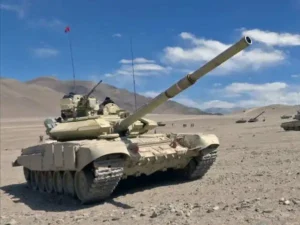The recent announcement by the Indian government to form a nine-member panel, chaired by former Principal Scientific Advisor Vijay Raghavan, to assess and restructure the Defense Research and Development Organization (DRDO) marks a significant turning point in the nation’s defense innovation landscape. The move follows years of dissatisfaction from various stakeholders, including the armed forces, regarding DRDO’s functioning and output.
The primary mission of this committee is multi-faceted. It is tasked with redefining the role of DRDO, streamlining its research efforts, strengthening collaboration with foreign entities, and rationalizing its extensive network of laboratories. Additionally, it aims to devise strategies to attract and retain talent, creating an environment conducive to innovation and research. In essence, it’s an opportunity to revitalize DRDO, fostering a culture of excellence and efficiency.
DRDO’s journey began in 1958, and since then, it has expanded to encompass 52 laboratories, engaging in multifaceted research domains. Unfortunately, despite its significant budget allocation, DRDO’s track record has been less than stellar. It has succeeded in missile technology but often faced delays and cost overruns in other areas, leading to dissatisfaction within the armed forces.
DRDO’s influence on defense procurement decisions and its preference for in-house solutions have often hindered timely acquisitions of critical defense systems. The organization has also been criticized for its reluctance to involve the private sector and academia, a shift the government now strongly advocates.
A notable contrast is India’s space agency, ISRO, which has achieved remarkable feats with a limited budget. ISRO’s success can be attributed to its collaborative approach, involving academia and the private sector at every stage. This model, marked by cohesion, teamwork, and a conducive working environment, could serve as an inspiration for DRDO’s transformation.
To ensure DRDO’s effectiveness, it must focus on research addressing India’s technological shortcomings and collaborate with academia and the private sector, similar to ISRO’s approach. Laboratories working in non-critical fields could be either closed or privatized. The government’s allocation of 25 percent of its defense R&D budget to the private sector is a positive step and could be further increased.
In addition, India’s national R&D budget should be incrementally increased from its current meager 0.7 percent to at least 1 percent of the total budget. This boost in funding, along with a revamped and collaborative approach, can pave the way for meaningful innovation in defense technology.
AFI
Source link
#Revamping #DRDO #Crucial #Step #Indias #Defense #Innovation





